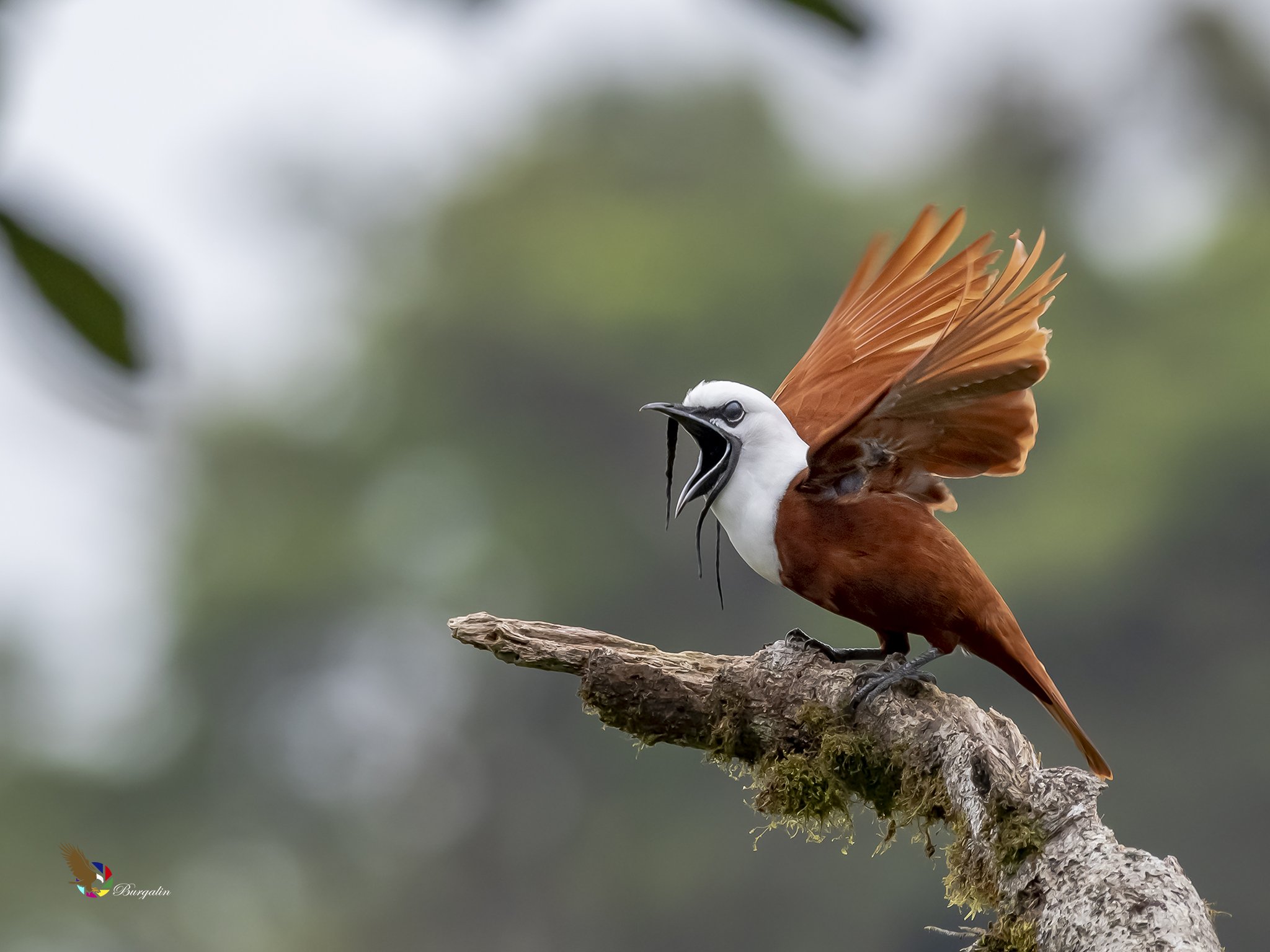The plumage of the Three-wattled Bellbird is mostly olive-green, helping it blend into the forest canopy. Males and females look similar, but males have slightly brighter plumage and longer wattles.
The Three-wattled Bellbird is best known for its unique vocalizations. The male produces a loud, far-carrying call that resembles a ringing or chiming sound, giving rise to its name “bellbird.” These calls are often heard during the breeding season when males gather in leks, communal display areas, to attract females and establish dominance. The calls of the Three-wattled Bellbird are considered some of the loudest bird vocalizations, reaching decibel levels that can be heard over long distances.

The diet of the Three-wattled Bellbird primarily consists of fruits, including various berries and figs. They play an essential role in seed dispersal within their forest habitat.
Conservation of the Three-wattled Bellbird is important due to habitat loss and fragmentation. Deforestation and agricultural expansion pose significant threats to its population. However, some protected areas in Central America, such as national parks and reserves, provide crucial habitats for this species.

In summary, the Three-wattled Bellbird is a fascinating bird species known for its unique appearance, with long, drooping wattles and distinctive vocalizations. Its presence in the highland forests of Central America adds to the region’s biodiversity. Conservation efforts are crucial to preserving their habitats and ensuring the survival of this remarkable species.






